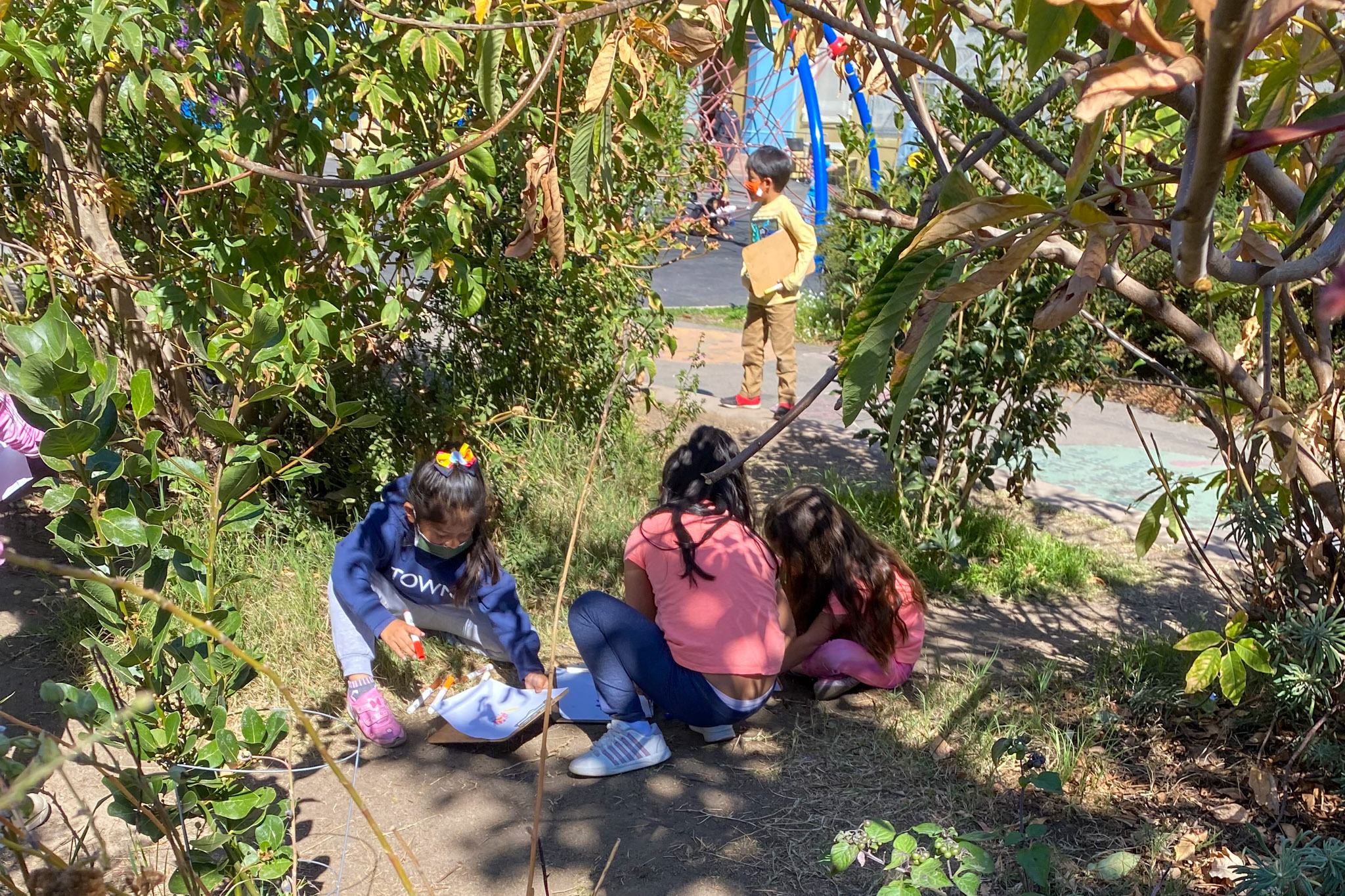Sugar, food coloring, glitter and other sparkly things: these are the ingredients that kindergartners turn into a “fairy soup” to lure magical visitors to their school garden.
They also make bee-watering stations out of seashells, nibble freshly picked peppers and plant seeds of their own in this wild-by-design garden used for lessons and activities since 2011 at Buena Vista Horace Mann K-8 Community School.
But a toxic discovery brought it all to a stop.
The Mission District school gated off its courtyard earlier this month after the San Francisco Unified School District found “higher than acceptable” levels of lead and arsenic in the garden soil. Outcry from staff and students led the district to then test the water—and by Tuesday had already found “higher than the accepted levels” of lead in three fountains.
“Before the lead poisoning, I had a really good time,” said Jeffrey Steeno, the school’s gardening teacher.
The courtyard closure brought overnight changes at the school. Staff rerouted evacuation plans, brought makeshift garden lessons inside and lost about half of its outdoor space where kids could de-stress.
Before lead forced its closure, the garden stayed busy all day, school staffers told The Standard. Large magnolias and citrus trees grow in its lead-tainted soil along with pomegranates, figs and other trees planted in memory of students and staff who died. Raised beds grow mostly tomatoes but also raspberries, blackberries, mulberries, chard, kale and mustard greens.
The students also take a keen interest in the wildlife around the garden, like the hawks preying on rodents and gophers. One time a hawk snatched a pigeon right out of the air, prompting horror-movie screams from a 7-year-old who Steeno was walking alongside.
“The kids learn a lot of stuff in the garden,” said Steeno, who said some students think he lives there. “City kids don’t have that much opportunity sometimes to have the therapeutic benefits of playing in the dirt. It’s also about encouraging imagination.”
Now, kids say they’re afraid that the garden made them sick.
“They are absolutely heartbroken,” BVHM community school coordinator Nick Chandler said. “It went from the most desired, healthy, healing part of the school to a place that kids are afraid of. This is not something they should have on their minds.”
Additional lead testing is underway.
Community members have also demanded officials to bring mobile medical testing to students. Pandemic-born Mission coalition Latino Task Force will provide testing soon, according to Jennifer Ferrigno, legislative aide to Supervisor Hillary Ronen.
Come January, the Mission District school may get its garden back.
The school board this week greenlit a no-bid contract for emergency excavation so the school can replace soil over winter break,weather permitting.
A first-grader called in to that meeting to tell board members that they “don’t like how the water has poison in it” and how the garden is closed.
“The garden is my favorite,” the first grader repeated four times. “There’s so much stuff to look at. There’s animals in there we get to look at. I want the bad soil … the bad little thing that’s in the soil [to] get out so I can play back in the garden.”
